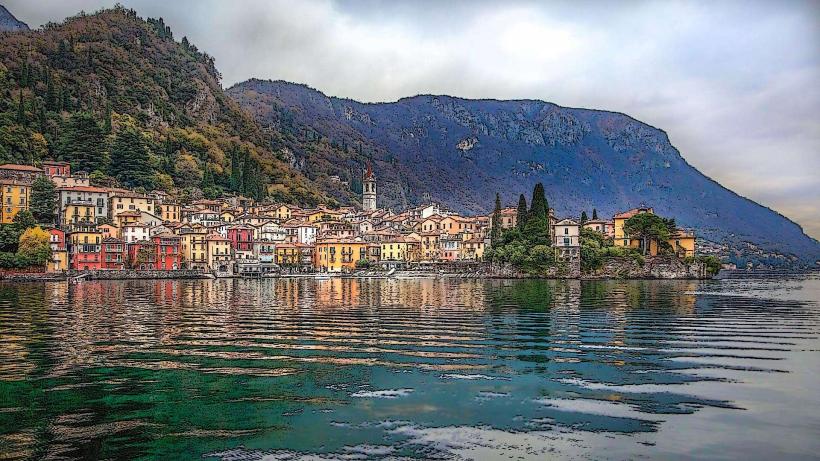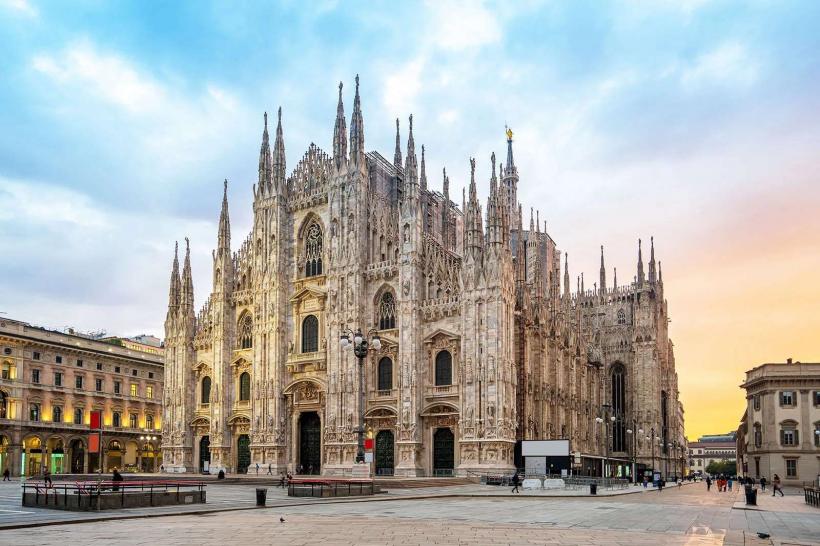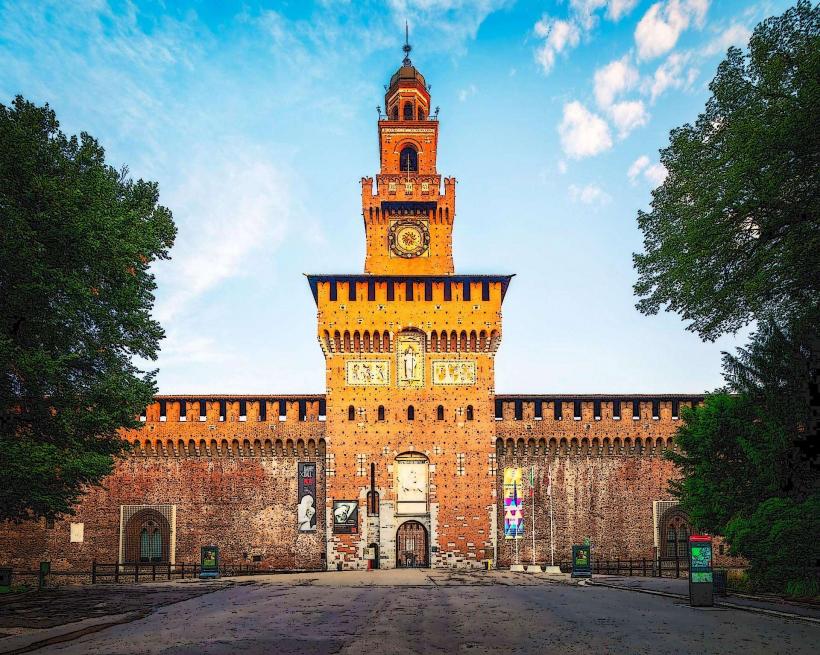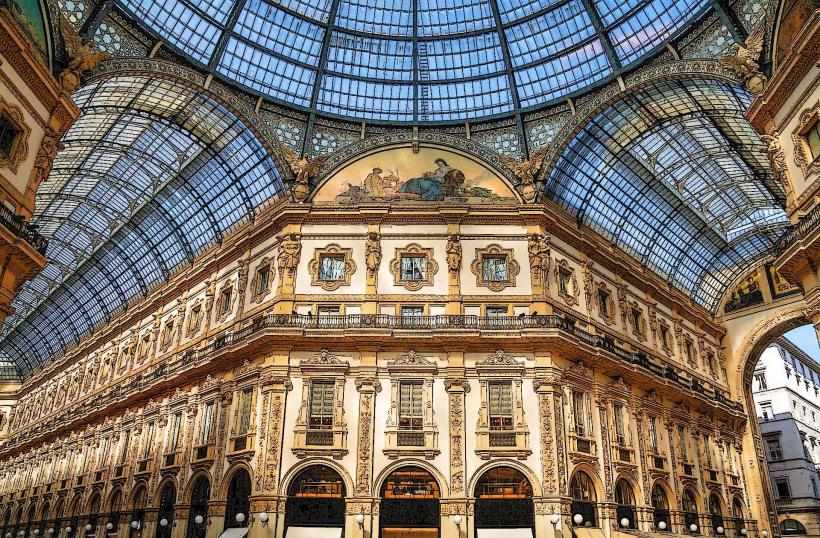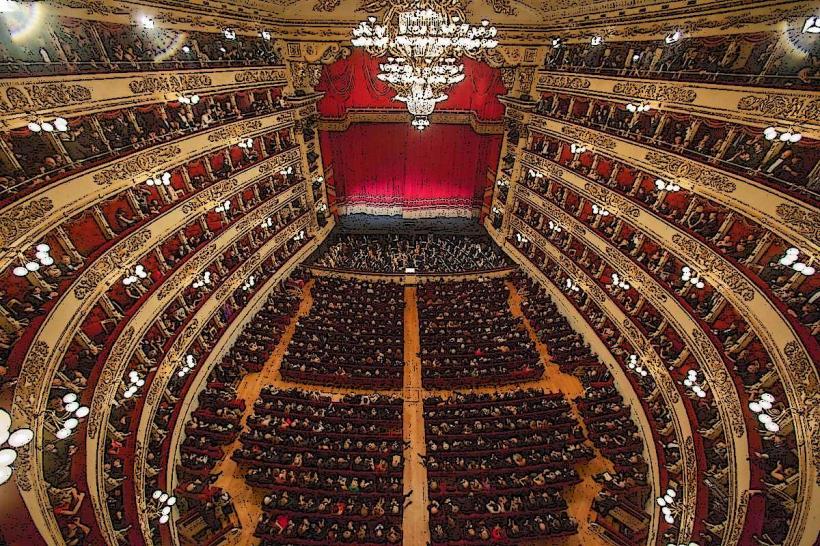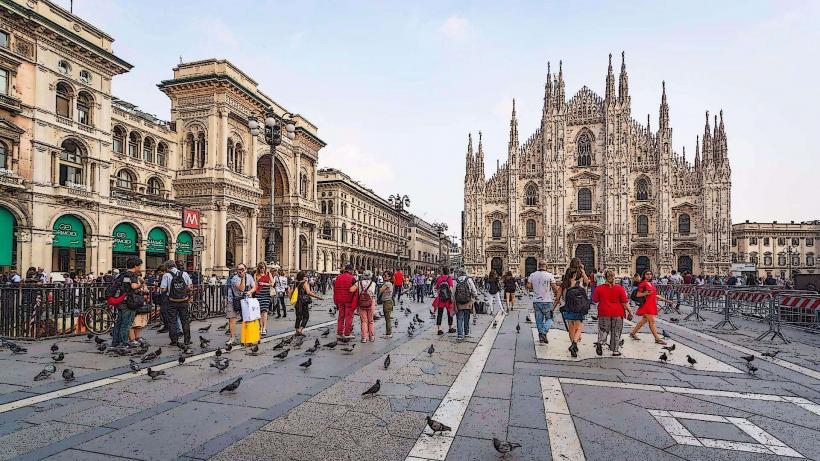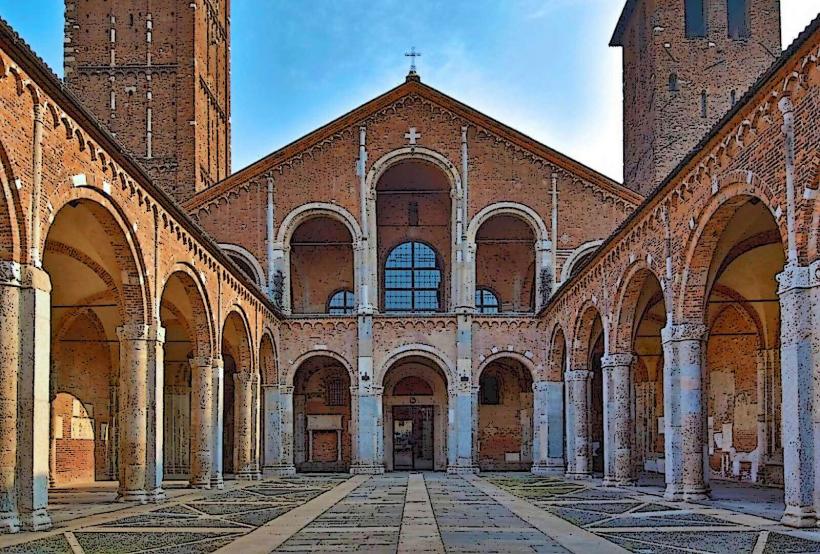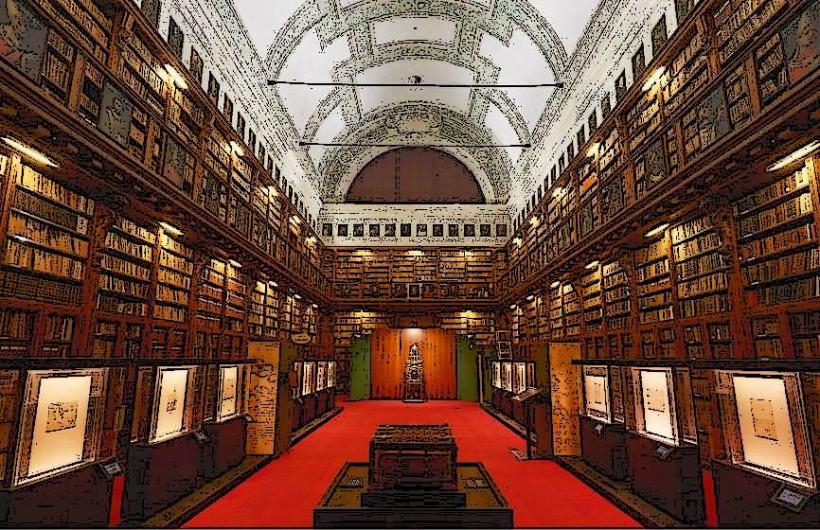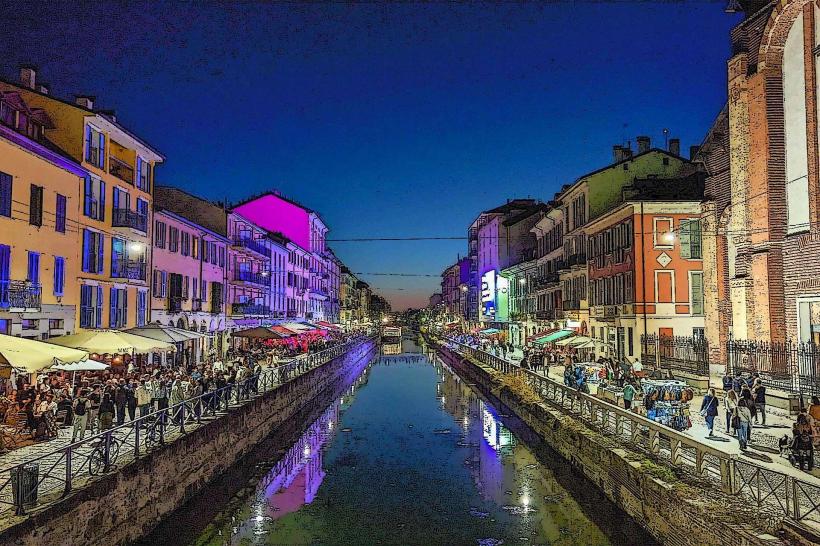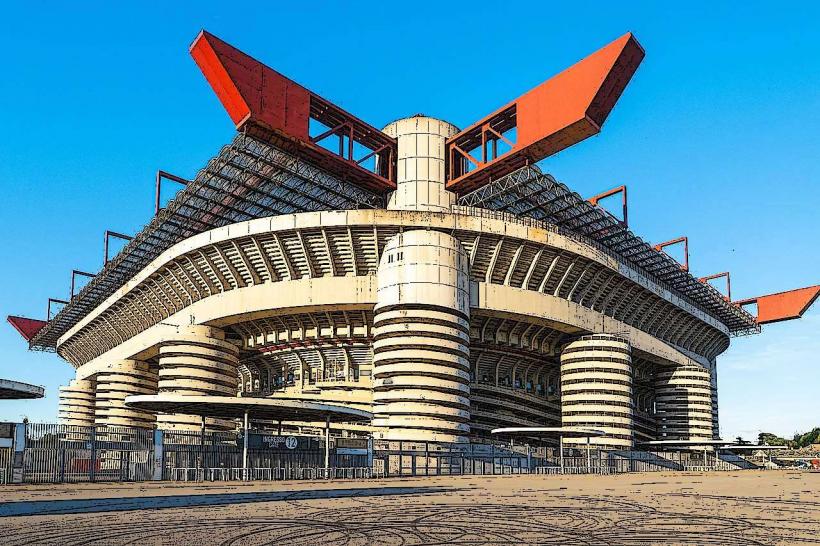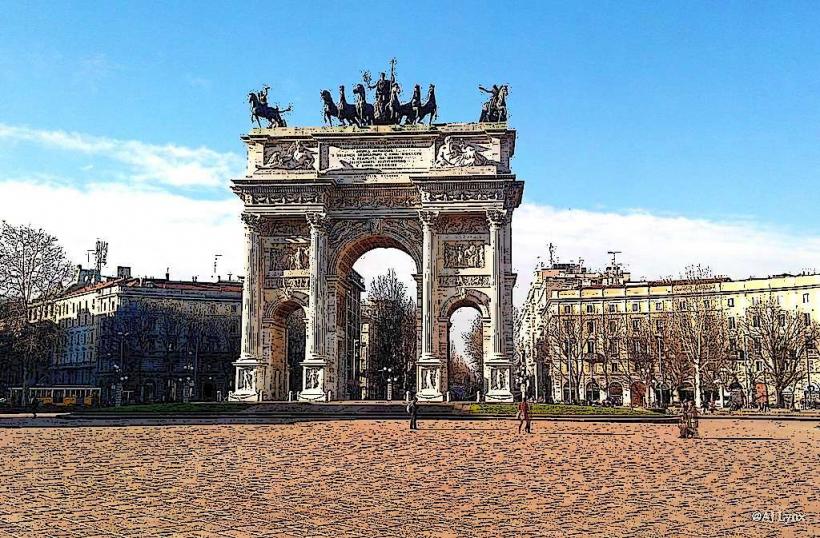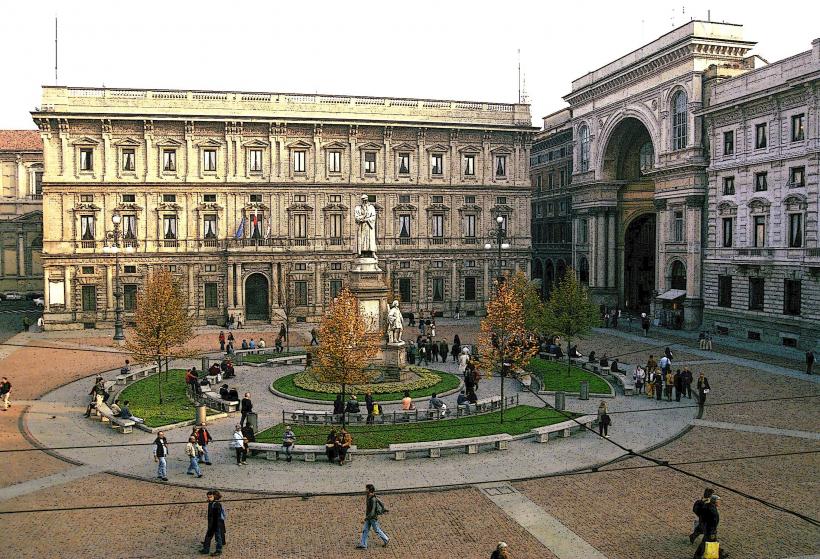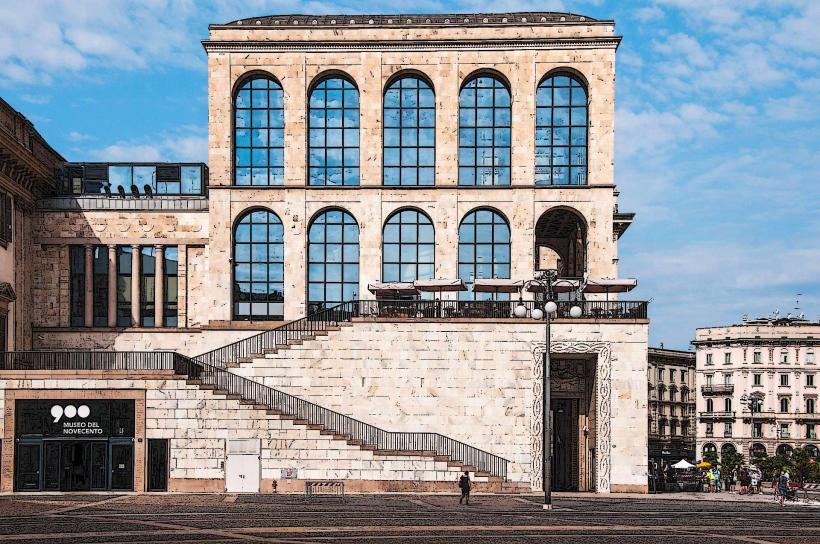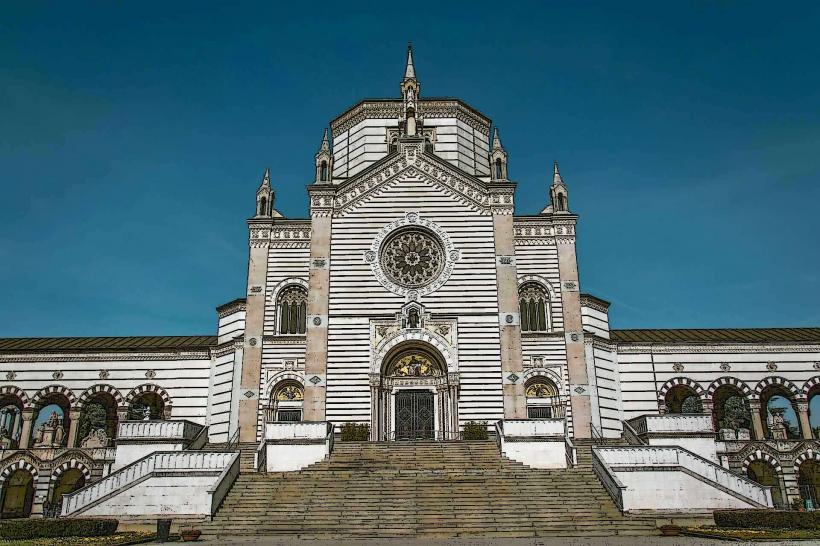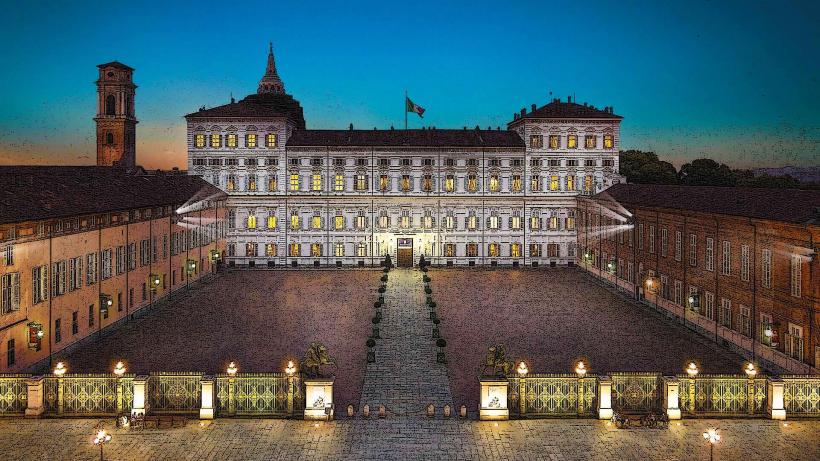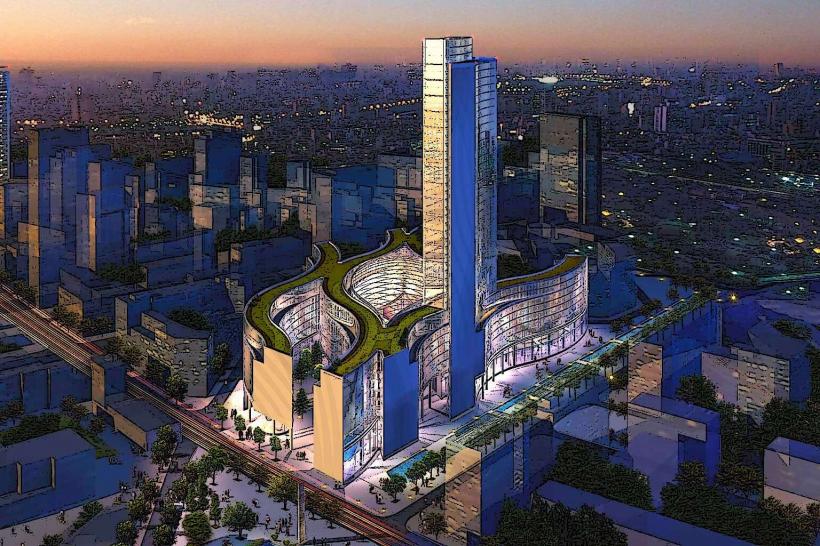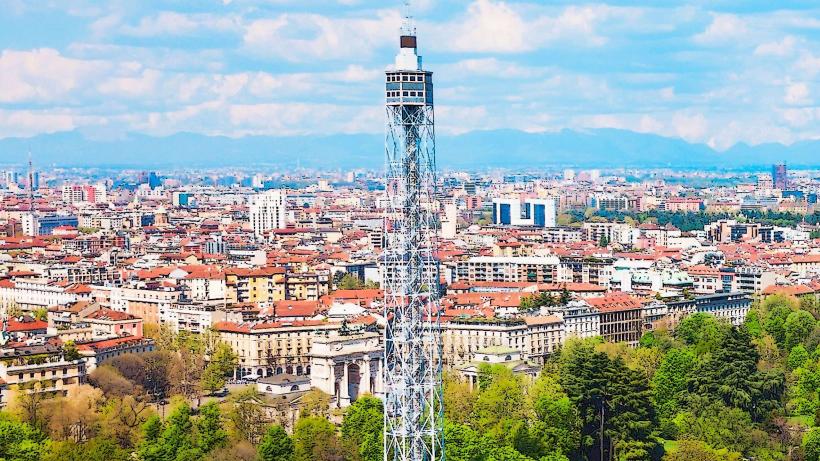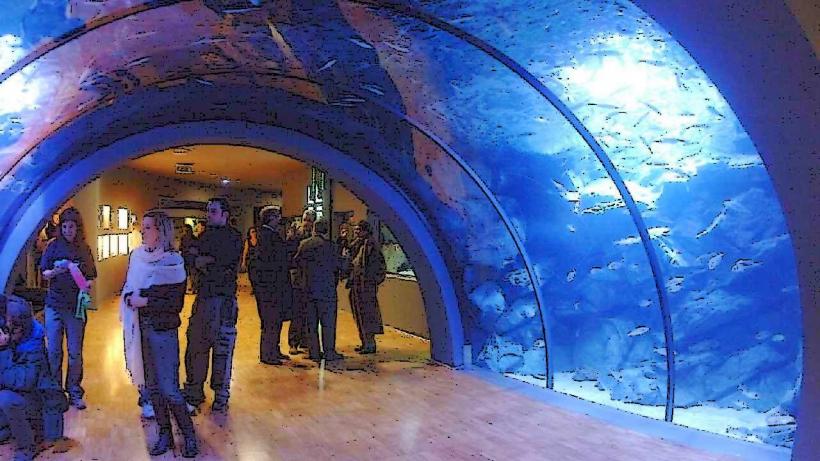Information
Landmark: The Last SupperCity: Milan
Country: Italy
Continent: Europe
The Last Supper (Cenacolo Vinciano) is one of the most famous and influential works of art in the world, painted by Leonardo da Vinci between 1495 and 1498. It is located in the Convent of Santa Maria delle Grazie in Milan, Italy, and is considered a masterpiece of Renaissance art. The painting depicts the moment when Jesus Christ announces to his disciples that one of them will betray him, capturing the dramatic reactions of the apostles.
1. Historical Background
- Commission: The painting was commissioned by Ludovico Sforza, the Duke of Milan, for the refectory (dining hall) of the Convent of Santa Maria delle Grazie. The church and convent were important religious and political centers in Milan at the time.
- Setting: The work was created as part of a larger renovation of the convent, specifically for the wall at the end of the refectory. It was intended not only to decorate the space but also to serve as an inspiration for reflection and meditation for the monks during their meals.
- Renaissance Context: The painting was created during the height of the Italian Renaissance, a period marked by the flourishing of art, science, and intellectual achievement. Leonardo, known for his genius in both art and science, was chosen for this commission due to his innovative approach to painting and his deep understanding of human emotion and anatomy.
2. Description of the Artwork
- Subject Matter: "The Last Supper" depicts the dramatic moment from the Gospel of John (13:21) when Jesus Christ announces that one of his disciples will betray him. The apostles are shown in a state of shock and confusion, each reacting with disbelief, fear, and anger.
- Composition: The composition of the painting is masterful. Leonardo arranged the figures in such a way that each apostle’s emotional reaction is distinct, with the central figure of Jesus at the focal point. He is calmly positioned with his hands spread out, while the apostles, grouped in threes, react with various gestures of surprise and distress.
- Jesus as the Focal Point: Jesus is centrally placed and is set apart from the apostles through the use of a triangular arrangement, symbolizing divinity and the Holy Trinity. The background has a serene landscape and a linear perspective, creating a sense of depth.
- Use of Light and Shadow: Leonardo’s skill in chiaroscuro (the use of light and shadow) adds dramatic tension to the scene, emphasizing the contrast between the stillness of Jesus and the chaotic reactions of the disciples.
- The Apostles’ Reactions: Each apostle is depicted with unique expressions and gestures, showcasing their emotional responses. Some show shock, others anger, and still others disbelief. The figure of Judas (who will betray Jesus) is depicted in shadow, clutching a bag of silver, further emphasizing his betrayal.
3. Artistic Techniques
- Perspective: One of the most significant aspects of "The Last Supper" is Leonardo’s use of linear perspective. The perspective lines in the painting converge at the head of Jesus, directing the viewer’s focus to the central figure. This technique creates a sense of depth and space within the otherwise flat two-dimensional surface.
- Fresco Technique: Originally, Leonardo intended to paint the fresco using traditional methods, but he chose an experimental technique, applying tempera on a dry plaster surface (as opposed to the wet-plaster fresco technique). Unfortunately, this method did not prove durable, and the painting began to deteriorate relatively quickly.
- Symbolism of Numbers: Leonardo also used the number three symbolically. There are three windows in the background, and the apostles are grouped in threes, which could symbolize the Holy Trinity or represent the divine order within the composition.
- Jesus and the Table: The table in front of Jesus is arranged in a way that further reinforces the focus on him, with the disciples positioned on either side. The use of a horizontal tabletop helps to emphasize the tension and drama of the scene.
4. Interpretations and Symbolism
- The Moment of Betrayal: The painting captures the moment of revelation when Jesus announces that one of his disciples will betray him. The tension in the room is palpable, and the varying reactions of the apostles show the deep emotional impact of the moment. Peter, for example, is shown leaning forward, asking John, the apostle next to him, who the betrayer might be, while Judas, the betrayer, is shown pulling back from the table and clutching a bag of coins.
- Christ's Calmness: Jesus remains calm and composed, a contrast to the emotional chaos around him. His serene posture and the halo around his head emphasize his divine nature.
- The Eucharist: In Christian tradition, the Last Supper is the moment when Jesus instituted the Eucharist (Holy Communion), a central sacrament of Christianity. The bread and wine in front of Jesus symbolically represent his body and blood, and this theme of sacrifice is present in the scene.
5. Preservation and Restoration
- Deterioration: Due to the experimental technique that Leonardo used, the painting began to deteriorate soon after it was completed. Over the centuries, the fresco suffered significant damage from humidity, air pollution, and war.
- Restoration Efforts: Several restorations have been carried out on the painting, most notably in the 1970s and 1980s, when extensive work was done to preserve the piece. The painting was meticulously cleaned and conserved, with efforts to stabilize the fresco and restore as much of the original detail as possible.
- Current Condition: Despite the deterioration over time, The Last Supper remains one of the most celebrated and studied works of art. It has been carefully preserved, and its restoration has allowed art historians and visitors to appreciate its original beauty.
6. Legacy and Influence
- Cultural Impact: "The Last Supper" has had a profound impact on Western art, influencing generations of artists and being reproduced and interpreted in countless ways. It is often considered one of the defining masterpieces of the Renaissance.
- Artistic Innovations: Leonardo’s innovative use of perspective, light, and human emotion helped to set a new standard for the portrayal of religious scenes in art. The painting’s emphasis on psychological realism was groundbreaking for its time.
- Popular Culture: Over the centuries, "The Last Supper" has inspired numerous adaptations and references in popular culture, from books to films, most famously as a central theme in Dan Brown’s novel "The Da Vinci Code".
- Pilgrimage Site: The painting remains one of Milan’s most visited landmarks, drawing art lovers, historians, and tourists from around the world. It is housed in the Convent of Santa Maria delle Grazie, which is part of a UNESCO World Heritage Site.
7. Visiting The Last Supper
- Location: The painting is housed in the Convent of Santa Maria delle Grazie in Milan, Italy. The church and convent are located near Piazza Santa Maria delle Grazie in the city center.
- Access and Tickets: Due to the fragility of the painting and to preserve its condition, visits are highly regulated. Tickets must be reserved in advance, and only small groups of visitors are allowed to view the artwork at a time. Visitors can typically spend only 15-20 minutes in front of the painting to ensure its protection.
- Guided Tours: Many visitors choose to take guided tours to learn more about the history, symbolism, and restoration of the painting.
8. Conclusion
"The Last Supper" remains a monumental achievement in the history of art. Its mastery of perspective, human emotion, and symbolism, combined with its cultural and religious significance, makes it one of Leonardo da Vinci's greatest works. The painting continues to captivate and inspire audiences worldwide, maintaining its status as one of the most iconic and studied works of art ever created.

